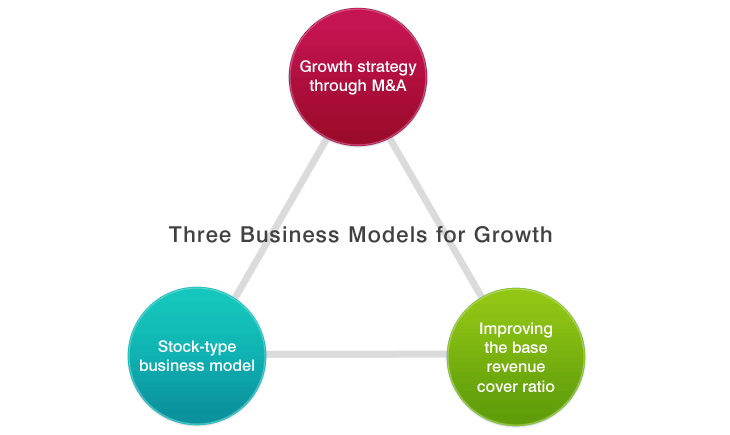Business Models for Achieving Growth

VT HOLDINGS' history is a history of M&A. The company began M&A immediately after listing on the 2nd Section of the Nagoya Stock Exchange in September 1998. It would not be an exaggeration to say that the company's aim in listing on the markets was to pursue growth through M&A. The company has continued to pursue M&A on an almost yearly basis, and in the 15 years (as of March 2013) since listing the company's sales have grown 17-fold and its ordinary income has grown 25-fold.
The company was the last automobile dealer to launch using the HONDA VERNO brand and it has successfully expanded its area through an M&A strategy and grown to become one of the leading dealers in Japan in terms of profits. The company's strength lies in using the sales know-how built up in this way to make rapid improvements to the profits of businesses that come under its umbrella. More recently, the company has expanded to the point where it is no longer contained within a single manufacturing conglomeration, such as Nissan, and aims to develop the business with a view to a full-line strategy in automobile-related services, including the possibilities for the Japan-wide development of the rental car business, expanding the business of exporting used vehicles and M&A on the global market, such as overseas dealerships.
Under its M&A policy, the company will implement ongoing initiatives within the scope of cash flow and aim to achieve a good balance of growth scenarios between various themes such as "expanding the business", "improving profitability" and "strengthening the financial structure".
With a falling birthrate and aging society, the number of registered automobiles in Japan is decreasing for both new and used vehicles but the number of vehicles owned per person is increasing throughout Japan because of factors such as an increase in the number of years vehicles are owned. For this reason, as an automobile dealer the company will be working hard to increase the number of vehicles owned by its customers while continuing to remain focused on sales of new vehicles.
Approximately 40% of the company's profits consist of the service sector, such as servicing and vehicle inspections, repairs and commission income, and the company is working to build a "stock-type business model" to achieve a steady source of income by increasing the number of vehicles owned by its customers.
On a global level, the number of vehicles owned per person is rising in the newly emerging economies and elsewhere, and there are many opportunities for the company to exploit. While cars themselves never stop evolving in many ways, such as electric and hydrogen-powered vehicles, the role a dealer business that carries out the sale and maintenance of vehicles will remain essential no matter how much cars evolve and the company intends to continue steadily increasing stock profits.
The base revenue cover ratio is an indicator expressed as "gross profits outside new vehicles" divided by "sales and administrative expenses". The indicator shows the extent to which profits from the non-new vehicles sector cover sales and administrative expenses.
If the indicator exceeds 100%, in theory it is possible to avoid making losses without selling a single new vehicle. This would also make it possible to avoid the risk of becoming easily affected by external factors, such as the new vehicle sales cycle which depends on manufacturers.
The average value for the company's five major subsidiaries is above 100%, at 103.2% (as of the end of 2Q in the Year Ended March 31, 2013), helping to maintain a corporate structure in which the company will avoid making losses even if it does not sell new vehicles.
The company intends to continue seeking an improved base revenue cover ratio and developing the business with the aim of building a robust financial structure that is less affected by the external environment.













